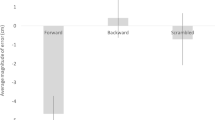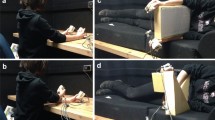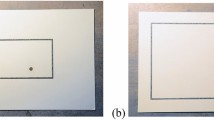Abstract
GEOMETRIC illusions of active touch, or haptic illusions, resemble their visual counterparts1–3, which suggests that a single process underlies both phenomena. Over4 has argued from this that a purely visual theory such as Gregory's5 is untenable because the interpretation of visual illusions in terms of depth cues is clearly inapplicable for haptic/tactile space. Gregory (vide Horrell6) has replied by suggesting that in a haptic illusion there is some form of cross-modal transfer (possibly involving visual imagery) such that the haptic information is dealt with centrally just as if it were visual in origin. This can explain the similarities between visual and haptic illusions but it cannot account for the failure of both Horrell6 and Fisher7 to find individual difference correlations between visual and haptic forms of the same illusion. Horrell has, however, found a small though not significant correlation for subjects reporting substantial visual imagery while setting a haptic Müller–Lyer (r=0.39, N=10). Thus perhaps the reason for the absence of overall correlations in the Horrell and Fisher studies was that, although cross-modal transfer led to similar mean errors for each kind of illusion, most subjects were so inefficient at visualizing on the basis of feel and touch that the predicted across subject correlations were obscured. And, of course, cross-modal processes might in addition be subject to other sources of inefficiency. This “inefficiency hypothesis” predicts that subjects who are good at haptic to visual transfer (measured independently of the illusions) should provide a high between modalities illusion correlation and less able subjects a low or zero one. This experiment tests this prediction and it also investigates the possible role of visual imagery in the suggested cross-modal processes.
This is a preview of subscription content, access via your institution
Access options
Subscribe to this journal
Receive 51 print issues and online access
$199.00 per year
only $3.90 per issue
Buy this article
- Purchase on Springer Link
- Instant access to full article PDF
Prices may be subject to local taxes which are calculated during checkout
Similar content being viewed by others
References
Revesz, G., J. Psychol. Psychotherapie, 1, 464 (1953).
Over, R., Amer. J. Psychol., 79, 590 (1966).
Rudel, R. G., and Teuber, H. L., Quart. J. Exp. Psychol., 15, 125 (1963).
Over, R., Nature, 214, 629 (1967).
Gregory, R. L., Nature, 199, 678 (1963).
Horrell, R. I., thesis, Univ. Sheffield (1968).
Fisher, G. H., Nature, 212, 105 (1966).
MacKinnon, A. A., Bull. Brit. Psychol. Soc., 21, 115 (1968).
Vanderplas, J. M., and Garvin, E. A., J. Exp. Psychol., 57, 147 (1959).
Author information
Authors and Affiliations
Rights and permissions
About this article
Cite this article
FRISBY, J., DAVIES, I. Is the Haptic Müller–Lyer a Visual Phenomenon?. Nature 231, 463–465 (1971). https://doi.org/10.1038/231463b0
Received:
Revised:
Issue Date:
DOI: https://doi.org/10.1038/231463b0
Comments
By submitting a comment you agree to abide by our Terms and Community Guidelines. If you find something abusive or that does not comply with our terms or guidelines please flag it as inappropriate.



